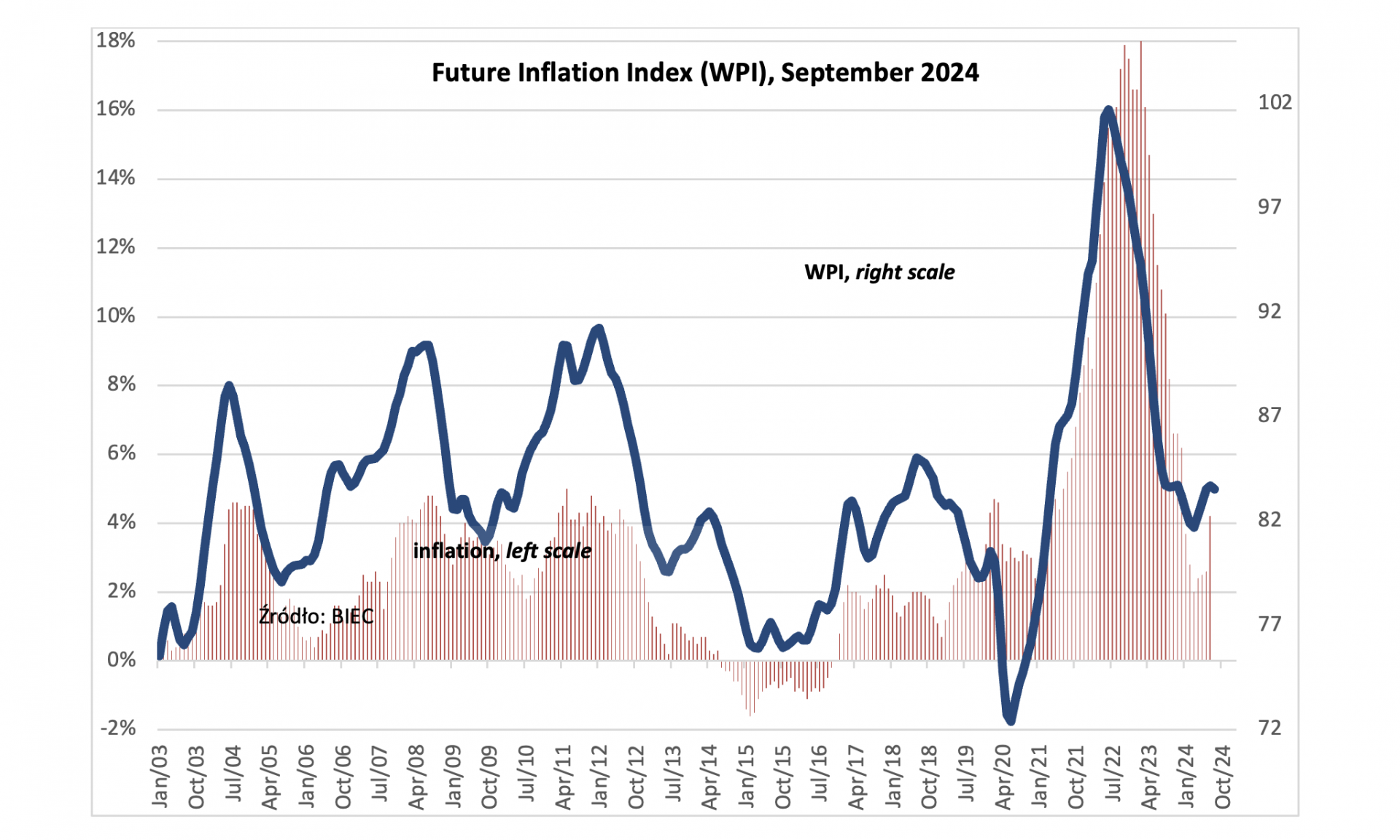Poland: Economic slowdown eases inflation pressures, but expectations remain high
The Future Inflation Index (WPI), which predicts consumer price trends months in advance, showed only a slight decline in September, dropping 0.2 points from the previous month. Despite this minor dip, inflationary concerns remain, as consumer and business expectations for rising prices continue to grow.
After rising steadily since April, the WPI had indicated a potential inflation rebound, confirmed by data from the Central Statistical Office in recent months. However, several key inflation drivers have eased. Global commodity prices have stabilized, and wage growth in the corporate sector has slowed significantly, dropping from around 9% earlier this year to just over 5%. These factors are reducing demand-side pressure on prices.
Economic conditions both domestically and internationally point to a slowdown rather than a recovery, which is helping to curb inflation. However, inflation expectations remain high. In August, 88.5% of consumers anticipated higher prices, up from 81% in June. Over 60% expect prices to rise at the same or a faster rate in the coming months, while around 20% predict a slight slowdown.
Business expectations are also rising. In the manufacturing sector, the percentage of companies planning price increases now exceeds those planning price cuts by nearly 10 percentage points, doubling from 5 points in June. While businesses face the dual challenge of rising labor costs and slowing demand, they are increasingly pressured to raise prices to protect shrinking profit margins. Producer prices (PPI) have been falling since July 2022, and while the decline has slowed, it suggests some companies may adopt a price-raising strategy to cope with increasing costs.
In the commodities market, energy prices, especially oil and gas, have seen the largest declines in recent months, while prices for cocoa, coffee, and tea have seen the biggest rises. Despite these fluctuations, overall stability in commodity prices has contributed to reducing inflationary pressures for now.
Source: BIEC









